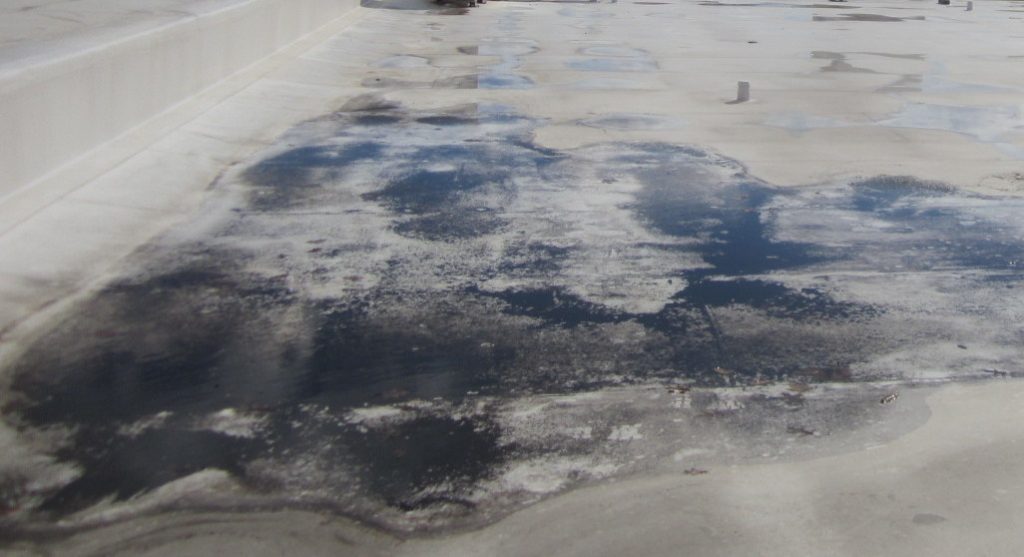Robert S. Michaud, P.E.
May 13, 2020

OK, this seems like a pretty easy one, right? Standing water on a roof is bad, that is obvious, but let’s think through all of the downsides, shall we?
- Standing water greatly increases the chance of roof leaks. Any minor hole or defect in the roofing material, whether it is PVC, EPDM, modified bitumen, etc. will be exploited by standing water. The upshot is that even once you discover the leak inside the building, finding the source of the leak is not made any easier if your standing pools of water are large or many as in the picture above.
- Standing water provides an environment for things to grow on your roof. All kinds of things! The only time this is acceptable is when you have a true “green roof” that is designed for roof vegitation. However, too many times, we have found very unintentional “green roof” systems where grass and even trees have started to grow on roofs. Not only can these clog up drains and even damage the roofing material, they can further inhibit the proper drainage of the roof, leading to more standing water. And what exactly is that black stuff growing on this roof? In this case, it is probably not mold but rather accumulated dirt, which also provides a place for seeds to take root. None of these scenarios is good.
- As eluded to in point number 2, proper flow of water to the roof drains, scuppers or gutters and downspouts is critical to the proper function of a roof system. If not profiled correctly water accumulates, and depending on the type of insulation underneath, could even compress that insulation further, and that leads to even more water accumulation.
- Speaking of insulation, should there be a small leak in the roof membrane where there is standing water, that water will saturate the insulation, severely limiting its effectiveness. This is especially problematic in the winters.
- Also in winter, these areas of standing water turn into virtual skating rinks and provide a particularly hazardous place for maintenance workers to travel as they try to maintain roof mounted equipment.
These are just a handful of reasons that standing water on roofs is bad. Can you think of others? Leave them in the comments below.
Now that we have identified why this is bad, what can be done about it? Depending on the cause of the water build up, there are a number of things that could be done, some for little cost, others rather expensive.
- Perform routine cleaning of roof drains, scuppers, gutters and downspouts to make sure sticks, leaves, and other foreign materials are not clogging them up. Make sure that strainer baskets are properly installed over the roof drains to help prevent clogging.
- Perform periodic roof inspections by qualified professionals trained to look for changes in the roofing materials, flashing, connections, seams, etc. to minimize the chance of areas where ponding might begin and to assess the overall condition of the roof, and to properly plan for any necessary maintenance or replacement work.
- Trim back overhanging tree branches to keep leaves and broken branches from accumulating on the roof and causing pools to form.
- If problems are found such as compressed insulation, or improperly profiled roofing that does not promote proper drainage, consult with a qualified roofing contractor to make the repairs necessary to prevent standing water and other roof problems. This is the most costly of the action items listed, but these corrections are minor when compared to damage to interior finishes, equipment or furnishings – and the roof will still need to be repaired then too.
Roof systems sometimes don’t get the attention they deserve, but the old saying about repairing the roof before it rains is still true. Better yet, let’s inspect and maintain it before it needs to be fixed! That is an even better idea.
